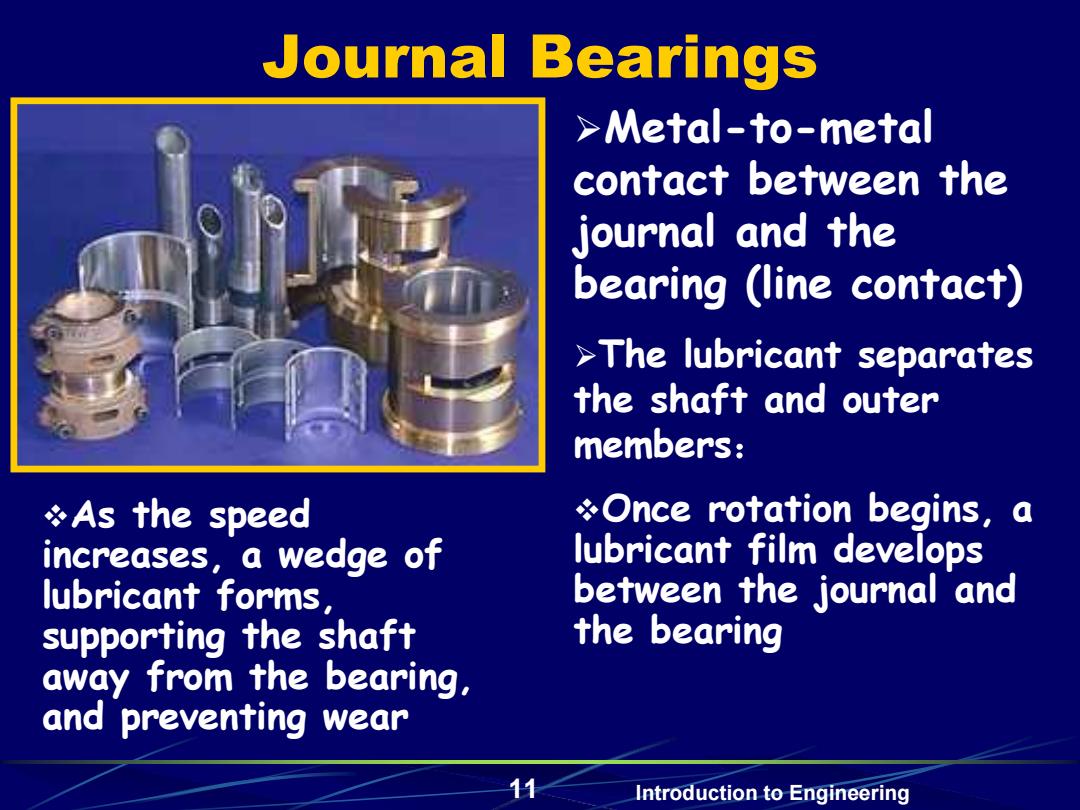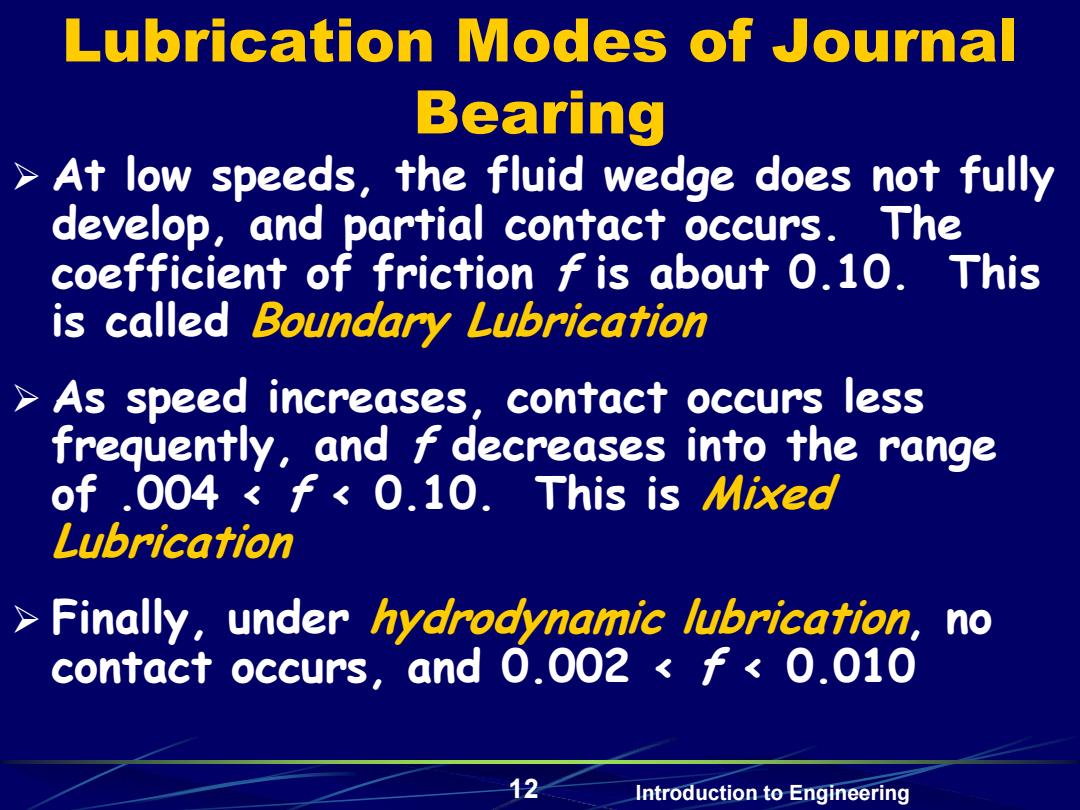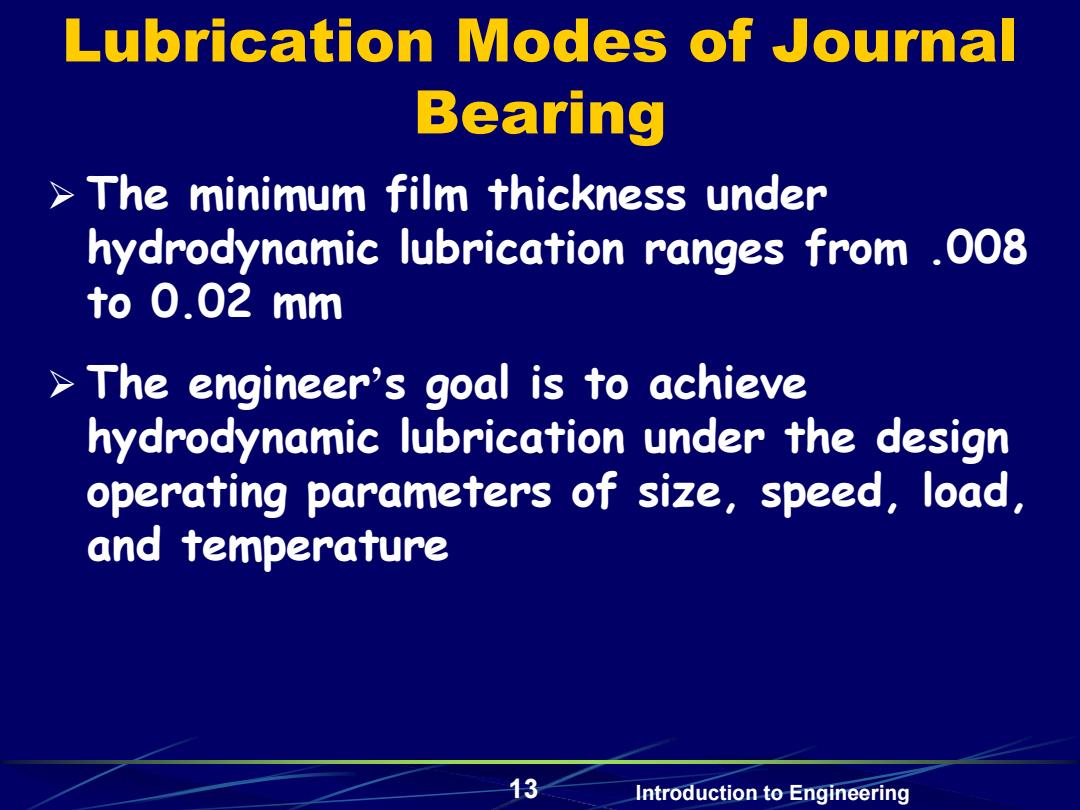
Journal Bearings >Metal-to-metal contact between the journal and the bearing (line contact) >The lubricant separates the shaft and outer members: *As the speed Once rotation begins,a increases,a wedge of lubricant film develops lubricant forms, between the journal and supporting the shaft the bearing away from the bearing, and preventing wear Introduction to Engineering
11 Introduction to Engineering Journal Bearings Metal-to-metal contact between the journal and the bearing (line contact) The lubricant separates the shaft and outer members: Once rotation begins, a lubricant film develops between the journal and the bearing As the speed increases, a wedge of lubricant forms, supporting the shaft away from the bearing, and preventing wear

Lubrication Modes of Journal Bearing At low speeds,the fluid wedge does not fully develop,and partial contact occurs.The coefficient of friction fis about 0.10.This is called Boundary Lubrication As speed increases,contact occurs less frequently,and f decreases into the range of .004 <f<0.10.This is Mixed Lubrication Finally,under hydrodynamic lubrication, no contact occurs,and 0.002 <f<0.010 Introduction to Engineering
12 Introduction to Engineering Lubrication Modes of Journal Bearing At low speeds, the fluid wedge does not fully develop, and partial contact occurs. The coefficient of friction f is about 0.10. This is called Boundary Lubrication As speed increases, contact occurs less frequently, and f decreases into the range of .004 < f < 0.10. This is Mixed Lubrication Finally, under hydrodynamic lubrication, no contact occurs, and 0.002 < f < 0.010

Lubrication Modes of Journal Bearing The minimum film thickness under hydrodynamic lubrication ranges from .008 to0.02 mm The engineer's goal is to achieve hydrodynamic lubrication under the design operating parameters of size,speed,load and temperature Introduction to Engineering
13 Introduction to Engineering Lubrication Modes of Journal Bearing The minimum film thickness under hydrodynamic lubrication ranges from .008 to 0.02 mm The engineer’s goal is to achieve hydrodynamic lubrication under the design operating parameters of size, speed, load, and temperature